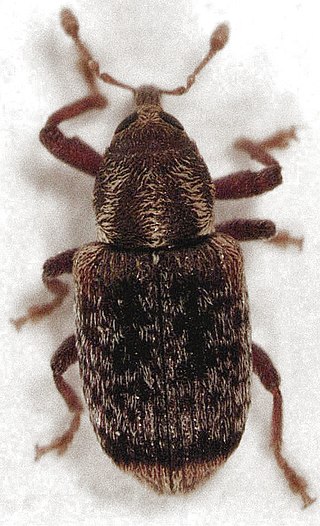
Peristoreus is a weevil genus native to New Zealand. This genus was first described in 1877 by Theodor Franz Wilhelm Kirsch.
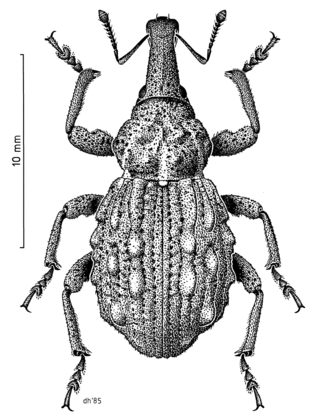
Hadramphus tuberculatus is a rare weevil endemic to Canterbury in the South Island of New Zealand. It was thought to be extinct in 1922 but was rediscovered in 2004.

Hadramphus, commonly known as knobbled weevils, is a genus of flightless molytine weevils from the family Curculionidae. It is endemic to New Zealand and consists of four species.
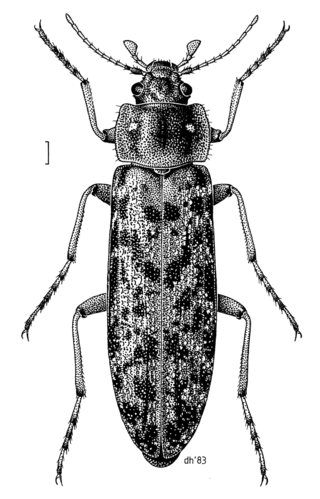
The Chalcodryidae are a family of beetles in the superfamily Tenebrionoidea. It contains at least five species in two genera Chalcodrya and Philpottia, which are endemic to New Zealand. They are generally found associated with moss or lichen covered branches, with the larvae having been found to be associated with dead twigs. They are likely noctural, feeding on lichen and other plant material at night. The genera Sirrhas and Onysius, formerly placed in this family, have subsequently been transferred to Promecheilidae.

Thomas Broun was a Scottish-born soldier, farmer, teacher and entomologist, who spent much of his career in New Zealand. He is known for his study of the beetles (Coleoptera) of New Zealand.

Holcaspis is a genus of beetles in the family Carabidae, endemic to New Zealand.
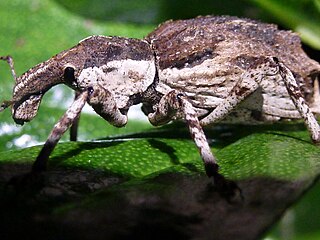
Anagotus stephenensis, commonly known as the ngaio weevil, is a large flightless weevil that is only found on Stephens Island in New Zealand. The ngaio weevil was discovered in 1916 by A.C. O'Connor on Stephens Island. Thomas Broun described it in 1921 as Phaeophanus oconnori after its collector. The weevils were observed at the time to be 'feeding on tall fescue and the leaves of trees'.
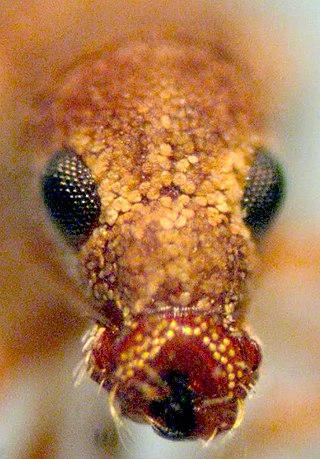
The Anypotactini are a Neotropical weevil tribe in the subfamily Entiminae. It includes 81 described species.

Ectemnorhinini is a weevil tribe in the subfamily Entiminae.

Eustylini is a primarily Neotropical weevil tribe in the subfamily Entiminae.

Peristoreus flavitarsis is a species of true weevil. It is endemic to New Zealand. The larvae are leaf miners of Podocarpus totara. Similar leaf mines have also been found on Podocarpus acutifolius and Podocarpus cunninghamii.

Peristoreus fulvus is a species of true weevil. It is endemic to New Zealand. It is associated with plants of the genus Muehlenbeckia.
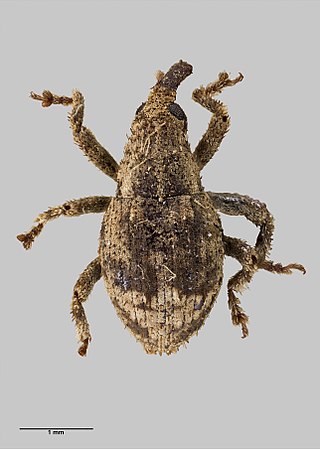
Didymus is a genus of beetles known as weevils. The genus contains the following species:

Turbott's weevil is a weevil that is endemic to New Zealand. It has been found on the Hen and Chicken Islands, the Poor Knights Islands and the Three Kings Islands.
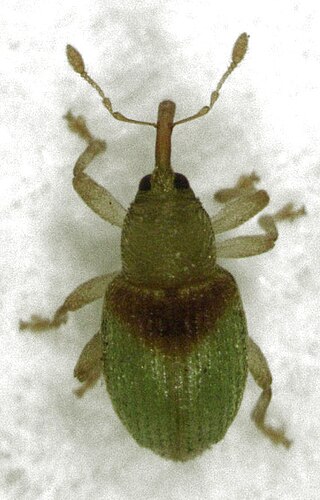
Peristoreus viridipennis is a species of true weevil. It is endemic to New Zealand. It is associated with plants of the genus Muehlenbeckia.

Didymus metrosideri is an endemic weevil from the Kermadec Islands in New Zealand. This species was discovered by W. L. Wallace during the 1908 Kermedec Islands expedition.

Helmoreus is a genus of fungus weevil which was circumscribed by the New Zealand entomologist Beverley Holloway in 1982. The generic name honors the scientific illustrator Des Helmore. It is found in New Zealand, Australia, and New Caledonia. It is in the tribe Stenocerini.

Lyperobius hudsoni is a flightless weevil found in alpine areas of Central Otago and Otago Lakes in the South Island of New Zealand.
Brenda Mabel May was a New Zealand speleological entomologist known for her contributions to the understanding of weevil larvae biology. Between 1956 and 1980, she worked in the Entomology Division of the Department of Scientific and Industrial Research (DSIR). Afterwards, she became a research associate at Landcare Research, where she completed a systematic overview of New Zealand Curculionoidea, published in 1993. In 1998, May was elected as a Fellow of the Entomological Society of New Zealand in recognition of her contributions.
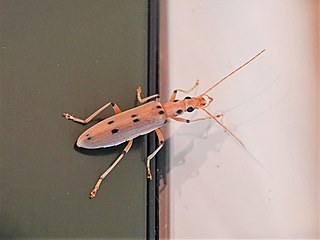
Parisopalpus is a genus of false blister beetles in the family Oedemeridae. The genus was first identified by Logan Hudson in 1975, who separated the group from Sessinia due to the presence of bifid mandibles, and n males of the species visible genitalia.

















